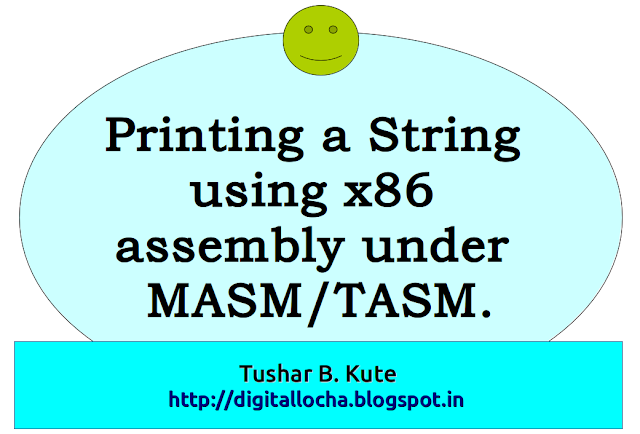The
internal architecture of 80386DX is divided into following sections:
- Central processing unit
- Execution unit
- Instruction decode unit
- Memory management unit
- Segmentation unit
- Paging unit
- Bus control unit
The
central processing unit is further divided into execution unit and
instruction unit. The memory management unit consists of a
segmentation unit and a paging unit . These unit operate in parallel.
Fetching, decoding, memory management and bus access for several
instruction are performed simultaneously. This parallel operation is
called pipelined instruction processing .
Execution
unit : The execution unit read the instruction from the
instruction queue and executes the instructions. It consists of three
subunit: control unit, data unit and protection test unit .
- Control unit : It contains microcode and special hardware. The microcode and special hardware allow 80386DX to reduce time required for execution of multiply and divide instruction . It also speeds up the effective address calculation .
- Data unit : The data unit contain the ALU, eight 32-bit general perpose registers and a 64-bit barrel shifter. The barrel shifter is used for multiple bit shifts in one clock. Thus it increases the speed of all shift and rotate operation. The multiply/divide logic implement the bit shift rotate algorithm to complete the operation in minimum time. The entire data unit is responsible for data operation requested by the control unit .
- Protection test unit : the protection test unit check for segmentation violations under the control of the microcode.
Instruction
decode unit : The instruction decode unit takes the instruction
bytes fron the code prefetch queue and translates them into microcode
the decoded. The decoded instruction are then stored in the
instruction queue. They are passed to control section for deriving
the necessary control signals .
Segmentation
unit : The segmentation unit translates logic addresses into
linear addresses at request of the execution unit . The segmentation
unit compares the effective address for the length limit specified in
the segment descriptor. The segment unit adds the segment base and
the effective address to generate linear address. Before calculation
of linear address it also check for access rights. It provides a
4-level protection mechanism for protecting and isolating the system
code and data from those of the application program.
Paging
unit : When the 80386DX paging mechanism is unabled, the paging
unit translates linear addresses generated by the segmentation unit
or the code prefetch unit into physical addresses. If paging unit is
not enabled, the physical address is the same as the linear address,
and no translation is necessary. The paging unit gives physical
address to the bus interface unit to perform memory and I/O accesses
. It organizes the physical memory in term of pages of 4 kbytes size
each .
The
control and attribute PLA check the privileges at the page level.
Each of the page maintain the paging information of the task. The
limit and attribute PLA checks segment limits and attributes at the
segment level to avoid anvalid accesses to code and data in the
memory segments .
Bus
control unit : The bus control unit is the 80386DX's
communication with the out side world. It provide a full 32-bit
bi-directional data bus and 32-bit address bus. The bus control unit
is responsible for the following operations :
- It accepts internal request for code fetch and data transfer from the code fetch unit and from the execution unit. It then prioritize the request with the help of prioritize and generate signal to perform bus cycles.
- It sends address, data and control signal to communicate with memory and I/O devices. The address driver drives the bus enable and address signal A0-A31 and the transceiver interface the internal data bus with the system bus .
- It control the interface to the external bus masters and coprocessors.
- It also provides the address relocation facility.
Instruction
prefetch unit : The instrction prefetch unit fetch sequentially
the instruction byte stream from the memory. It uses bus control unit
to fetch instruction bytes when the bus control unit is not
performing bus cycle to execute an instruction. These prefetched
instruction bytes are stored in the 16-byte code queue. A 16-byte
code queue holds these instruction until the decoder needs them the
prefetcher always fetches instruction in the order in which they
appear in the memory. It fact, the prefetcher simply reads code one
double word at the time, not caring whether it's bringing in complete
instruction are executed, the contents of the prefetched and decode
queues are cleared out. In this case, prefetcher again starts filling
its queue.
Instruction
predecode unit : The instruction predecode unit
takes instruction bytes from the instuction prefecth queue an
translate them into microcode the decoded instruction are then stored
in instruction queue.
References:
- Wikipedia page on 80386.
- “Advanced 80386 Programming Techniques” by James L. Turley, TMH Publications.









